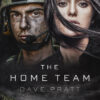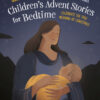Hello! Maureen Pratt here with another blog post about the writing art and craft. This time, some thoughts about the English language and how we might mix it up a little to yield fresh "color," insight, and depth to our work.
Two real life events have inspired me to blog about this. One was a conversation I overheard in the post office. It went like this:
Postal Clerk (handing Customer a pane of stamps): Here you go.
Customer: Where? Here I go where?
Postal Clerk: Your stamps, sir. Here you go.
Customer: Where do I go?
Postal Clerk (pointing at pane of stamps): I don't know, sir, but here are your stamps.
Customer: Oh. Thank you.
The other event was a conversation I had with an employee at my local grocery store. It went like this:
Employee: Did you find everything you wanted, ma'am?
Me: Yes, except you didn't have blueberries.
Employee: If you're really craving blueberries, we have frozen.
Me: I know, but they don't go well on cereal.
Employee: Got it. How about strawberries?
Me: I like them, but not on cereal.
Employee: Too bad. Because the strawberries are really transcendent today.
If you smiled at both of these illustrations, I'm right there with you. The first exchange involved someone whose native language was not English and who clearly had trouble with the idiom, "here you go." The second one invovled someone whose native language was English, but who clearly went beyond the norm in word association. (What would it have been like, I wonder, if I had purchased and eaten those "transcendent" strawberries?!)
Although different in context and character, both of these are examples of how creative we can get with English, depending not just on who is speaking, but to whom one is speaking. I don't have to go into a detailed description, for example, to convey the quirky character of someone who would describe strawberries as "transcendent." I also don't have to go into much detail at all to demonstrate how the English language, particularly slang and idioms, can be confusing for the non-native speaker – all it takes is those few lines of dialogue.
When I interview people for my non-fiction work, I keep my ears tuned to those sometimes-subtle, but always telling turns of phrase that can give away someone's background, expertise, or spiritual context. Often, my intervewees are unaware of how they sound, how they put words together, and what phrases they use. But if I can pick up on these, my work can be much tighter and telling than any labored description I might come up with.
In fiction, I use much the same technique. A character who is an engineer, for example, might describe something completely differently from someone who is a musician. The engineer might be more apt to talk in terms of form, fit, and building blocks, whereas the musician might use his or her sense of rhythm, tone, and feeling. The engineer might be a very linear communicator (A + B = C), whereas someone who is more artistically inclined might be non-linear (A + (A-B) – E = ?)
Simple words can be powerful descriptors. For example, growing up in Illinois, I always called the strip of grass between the street and the sidewalk the "boulevard." In Ohio, it was the "treelawn." In Boston, a drinking fountain was a "bubbler." Add to these little differences the challenge of regional pronunciations, and it's no wonder that many find English to be an extremely difficult language to master!
As children, we read of pink elephants, flying monkeys, talking bears, and mad hatters. As adults, and as writers, we can call upon that play on reality and language to craft English work that has creative depth and, dare I say it, transcendent description – even when writing of the most mundane of subjects.
Blessings of joy and peace,
Maureen
www.maureenpratt.com
http://blog.beliefnet.com/gooddaysbaddays/


